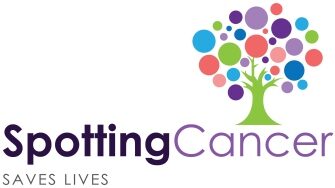Myth #1: You Can’t Get Sunburned on a Cloudy Day
False. Up to 80% of UV rays can pass through clouds. Even if it’s overcast, you still need broad-spectrum SPF 30 or higher sunscreen.
Myth #2: Tanning Beds Are Safer Than the Sun
Wrong. Tanning beds emit UVA and UVB rays that damage the skin. According to the Skin Cancer Foundation, just one indoor tanning session increases the risk of melanoma by 20%.
Myth #3: People with Darker Skin Don’t Need Sunscreen
Everyone needs sun protection. While people with more melanin have some natural protection, they can still develop skin cancer. In fact, skin cancer is often diagnosed later in people with darker skin, making it more dangerous.
Myth #4: You Only Need Sunscreen at the Beach
Sunscreen is a daily necessity. UV rays can reach you while driving, walking your dog, or sitting by a window. Protect exposed skin every day.
Myth #5: Sunscreen Blocks Vitamin D
While sunscreen can slightly reduce vitamin D synthesis, you can still get enough through brief sun exposure and diet. Don’t skip sunscreen for fear of deficiency—talk to your doctor about safe supplementation if needed.
Myth #6: Glass Windows Protect You from the Sun
While most glass blocks UVB rays (the ones that cause sunburn), UVA rays still pass through. UVA rays penetrate deeper into the skin and are linked to aging and skin cancer—so sitting by a sunny window or driving without sunscreen could cause skin damage.
Myth #7: Wearing a Hat Means You Don’t Need Sunscreen
Most hats offer only partial protection—and many common styles don’t block UV rays effectively. Unless your hat is labeled with a UPF (Ultraviolet Protection Factor) of 30 or higher, UV rays can still penetrate the fabric or reflect off surfaces and reach your face. For full protection, pair a wide-brimmed UPF-rated hat with broad-spectrum sunscreen.
Myth #8: Dark sunglasses protect my eyes from UV rays
Lens tint doesn’t indicate UV protection. Always look for sunglasses labeled 100% UVA/UVB protection or UV400 to truly shield your eyes and the surrounding skin.
Myth #9: Medications don’t affect sunburn risk
Many common medications—including antibiotics, acne treatments, and some antidepressants—can make your skin more sensitive to sunlight, increasing your risk of burning. Always check side effects and take extra precautions in the sun if needed.
Learn more about skin cancer prevention, detection and treatment. Download our Skin Cancer Guide now.
Protect your skin, protect your future.

